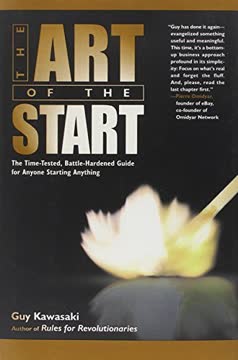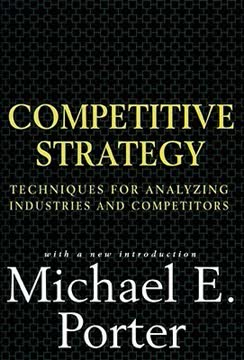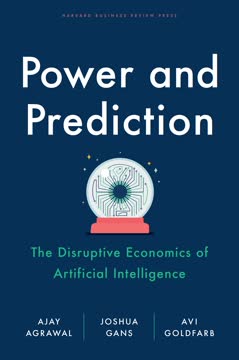Key Takeaways
1. Systems thinking: The cornerstone of learning organizations
Systems thinking is a discipline for seeing wholes. It is a framework for seeing interrelationships rather than things, for seeing patterns of change rather than static "snapshots."
Holistic perspective. Systems thinking provides a crucial shift from linear to circular causality. It enables leaders to see beyond isolated events and surface-level symptoms, revealing the underlying structures that shape complex situations. This perspective is essential for addressing persistent problems and creating lasting solutions.
Practical tools. The discipline offers practical tools like feedback loops, system archetypes, and computer simulations. These help managers visualize and understand the dynamic complexities of their organizations, markets, and broader environments. By mastering these tools, leaders can identify high-leverage points for intervention and avoid unintended consequences of their actions.
Integrative power. Systems thinking serves as the glue that binds together the other disciplines of a learning organization. It provides a common language for describing complex issues and helps teams develop a shared understanding of challenges and opportunities. This integrative capability is crucial for fostering collaboration and driving organizational learning and innovation.
2. Personal mastery: Cultivating individual growth and vision
Personal mastery is the discipline of continually clarifying and deepening our personal vision, of focusing our energies, of developing patience, and of seeing reality objectively.
Self-awareness and growth. Personal mastery begins with a commitment to lifelong learning and self-improvement. It involves developing a clear personal vision, maintaining creative tension between vision and current reality, and cultivating the capacity to see current reality more clearly.
Organizational impact. Organizations learn only through individuals who learn. Personal mastery fosters a workforce that is more committed, takes more initiative, and has a broader and deeper sense of responsibility in their work. This individual growth directly contributes to organizational learning and adaptability.
Key practices:
- Clarifying personal vision
- Holding creative tension between vision and current reality
- Developing patience and objectivity
- Seeing interconnections in the world
- Compassion and commitment to the whole
3. Mental models: Challenging assumptions and fostering openness
Mental models are deeply ingrained assumptions, generalizations, or even pictures or images that influence how we understand the world and how we take action.
Uncovering hidden assumptions. Mental models shape our perceptions and actions, often operating below the level of awareness. The discipline of working with mental models involves surfacing, testing, and improving our internal pictures of how the world works.
Fostering inquiry and reflection. Key skills in this discipline include:
- Recognizing "leaps of abstraction" (noticing our jumps from observation to generalization)
- Exposing the "left-hand column" (articulating what we normally do not say)
- Balancing inquiry and advocacy
- Distinguishing espoused theory from theory-in-use
Organizational impact. By actively working with mental models, organizations can overcome defensive routines, improve decision-making, and foster a culture of openness and continuous learning. This leads to greater adaptability and innovation in the face of changing business environments.
4. Shared vision: Aligning individual and organizational goals
A shared vision is not an idea. It is, rather, a force in people's hearts, a force of impressive power.
Collective aspiration. A shared vision provides focus and energy for learning. It goes beyond compliance to foster genuine commitment, transforming the organization's relationship with its employees from "theirs" to "ours."
Characteristics of powerful shared visions:
- Intrinsic rather than extrinsic (focused on the vision itself, not on a competitor)
- Connected to personal visions of individuals throughout the organization
- Evolves over time through ongoing dialogue and collective inquiry
Leadership role. Leaders must learn to listen to others' visions and to share their own in ways that inspire rather than impose. The process of building shared vision is ongoing and integrated into the fabric of daily organizational life.
5. Team learning: Harnessing collective intelligence
Team learning is the process of aligning and developing the capacity of a team to create the results its members truly desire.
Dialogue and discussion. Team learning involves mastering the practices of dialogue (exploring complex issues creatively) and discussion (presenting and defending different views to make decisions). These complementary processes allow teams to access a larger pool of common meaning.
Dealing with defensiveness. A key aspect of team learning is recognizing and working with the defensive routines that often thwart learning in groups. This requires creating a safe environment for surfacing and examining assumptions and beliefs.
Collective intelligence. When team learning is effective, the team's intelligence can exceed the sum of individual members' intelligence. This leads to extraordinary results and accelerated individual growth.
6. The laws of the fifth discipline: Understanding system dynamics
Today's problems come from yesterday's "solutions."
Key system principles:
- Problems often arise from past solutions
- The harder you push, the harder the system pushes back
- Behavior grows better before it grows worse
- The easy way out usually leads back in
- The cure can be worse than the disease
- Faster is slower
- Cause and effect are not closely related in time and space
- Small changes can produce big results—but the areas of highest leverage are often the least obvious
Practical implications. Understanding these laws helps managers avoid common pitfalls in problem-solving and decision-making. It encourages a longer-term perspective and a search for underlying causes rather than quick fixes.
Systemic solutions. By applying these principles, organizations can develop more effective, sustainable solutions to complex problems, avoiding unintended consequences and addressing root causes rather than symptoms.
7. Overcoming learning disabilities in organizations
The most effective defensive routines, like that of the forceful CEO, are those we cannot see.
Common learning disabilities:
- "I am my position"
- "The enemy is out there"
- The illusion of taking charge
- The fixation on events
- The parable of the boiled frog
- The delusion of learning from experience
- The myth of the management team
Recognizing patterns. Awareness of these learning disabilities is the first step in overcoming them. Organizations must develop the capacity to recognize these patterns and create structures and practices that counteract them.
Cultural shift. Addressing these disabilities requires a fundamental shift in organizational culture, moving from blame and defensiveness to openness, inquiry, and systemic thinking.
8. The leader's new work: Designer, teacher, and steward
In a learning organization, leaders are designers, teachers, and stewards.
Designer role. Leaders design the organization's purpose, vision, and core values. They also create policies, strategies, and structures that translate guiding ideas into business decisions.
Teacher role. Leaders help people throughout the organization develop more systemic views. They are responsible for fostering learning for everyone, continually helping people see the larger picture.
Steward role. Leaders see their organization as a vehicle for bringing learning and change into society. They serve a larger purpose beyond the organization itself.
9. Integrating learning and working: Building a culture of continuous improvement
Real learning gets to the heart of what it means to be human. Through learning we re-create ourselves.
Reflective practice. Organizations must create structures and processes that allow for regular reflection on action. This can include practices like After Action Reviews (AARs) and designated time for team reflection.
Learning in real-time. The goal is to make learning an integral part of daily work, rather than a separate activity. This involves developing skills of reflection-in-action, where individuals and teams can learn and adjust in real-time.
Cultural shift. Integrating learning and working requires a shift in organizational culture, valuing inquiry and reflection as much as action and results.
10. Creating practice fields: Developing skills through experimentation
Just as one becomes a master artist by continual practice, so the following principles and practices lay the groundwork for continually expanding the discipline of personal mastery.
Safe spaces for learning. Practice fields provide safe environments for teams to experiment, make mistakes, and learn without the pressures of real-world consequences.
Types of practice fields:
- Simulations and role-playing exercises
- Pilot projects
- Prototyping processes
- Designated "learning laboratories" within the organization
Skill development. Regular use of practice fields allows individuals and teams to develop and refine crucial skills, from systems thinking to dialogue and collaborative problem-solving.
11. Connecting with the core of the business: Aligning learning with organizational identity
A shared vision is vital for the learning organization because it provides the focus and energy for learning.
Organizational essence. Effective learning initiatives connect deeply with the organization's core identity and purpose. This requires leaders to understand and articulate what the organization truly stands for beyond profit-making.
Value creation. Learning efforts should be aligned with how the organization most naturally creates value. This ensures that learning initiatives are seen as central to the business, not peripheral activities.
Authentic engagement. When learning is connected to the organization's essence, it taps into people's intrinsic motivation and deepest aspirations, fostering genuine commitment and energy for change.
12. Developing learning infrastructures: Supporting ongoing growth and adaptation
Learning organizations are possible because, deep down, we are all learners.
Systematic support. Learning infrastructures provide the ongoing support necessary for continuous learning and adaptation. These can include:
- Formal education and training programs
- Knowledge management systems
- Communities of practice
- Designated reflection time and spaces
- Coaching and mentoring programs
Technology enablement. While technology alone is not sufficient, well-designed IT systems can significantly enhance learning capabilities, facilitating knowledge sharing and collaboration across the organization.
Evolving design. Learning infrastructures must be flexible and evolve over time. Leaders should approach their development as an iterative process, continually refining based on feedback and changing organizational needs.
Last updated:
FAQ
What's The Fifth Discipline about?
- Learning Organizations Concept: The Fifth Discipline by Peter M. Senge introduces the concept of a "learning organization," where members continuously expand their capacity to create desired results.
- Five Core Disciplines: The book outlines five disciplines essential for building a learning organization: Systems Thinking, Personal Mastery, Mental Models, Shared Vision, and Team Learning.
- Systems Thinking Focus: Central to the book is Systems Thinking, which encourages viewing organizations as interconnected systems rather than isolated parts.
Why should I read The Fifth Discipline?
- Transformational Insights: The book provides insights into fostering a culture of continuous learning and adaptability, challenging traditional management practices.
- Practical Framework: It offers a practical framework for understanding complex organizational dynamics and implementing change.
- Timeless Relevance: Despite being published in 1990, its principles remain relevant in today’s fast-paced, interconnected business environment.
What are the key takeaways of The Fifth Discipline?
- Systems Thinking Importance: Understanding organizations as complex systems helps identify leverage points for effective change.
- Integration of Learning and Work: Learning should be integrated into daily work processes, fostering a culture where reflection and action are connected.
- Collective Learning Power: Team learning and shared vision emphasize that “the whole is greater than the sum of its parts.”
What are the best quotes from The Fifth Discipline and what do they mean?
- “The harder you push, the harder the system pushes back.”: Highlights the counterproductive nature of aggressive management tactics, suggesting a need for a nuanced approach.
- “Today’s problems come from yesterday’s ‘solutions.’”: Reflects the idea that quick fixes often lead to new problems, encouraging long-term thinking.
- “The only sustainable competitive advantage is an organization’s ability to learn faster than the competition.”: Emphasizes the critical role of learning in maintaining a competitive edge.
What are the five disciplines outlined in The Fifth Discipline?
- Systems Thinking: Focuses on understanding the whole system and its interrelationships, recognizing patterns and dynamics.
- Personal Mastery: Involves individuals clarifying and deepening their personal vision, emphasizing lifelong learning and self-improvement.
- Mental Models: These are ingrained assumptions that shape understanding; challenging them is crucial for open dialogue and innovation.
- Shared Vision: Creates a common purpose that inspires and aligns the organization, fostering commitment and motivation.
- Team Learning: Emphasizes learning as a team, involving dialogue and collaboration to leverage collective intelligence.
How does The Fifth Discipline define a learning organization?
- Continuous Learning: Encourages individuals to learn continuously and share knowledge, fostering innovation and adaptability.
- Collective Aspiration: Aligns the organization’s vision with individual motivations, fostering a sense of purpose and commitment.
- Systems Perspective: Adopts a systems perspective, recognizing the interconnectedness of various elements within the organization.
What is the significance of personal mastery in The Fifth Discipline?
- Foundation of Learning Organizations: Personal mastery is essential for individual growth, fueling organizational learning.
- Alignment with Organizational Goals: Individuals with high personal mastery align their goals with the organization’s vision, enhancing performance.
- Empowerment and Responsibility: Encourages individuals to take responsibility for their learning, empowering them to contribute meaningfully.
How does The Fifth Discipline address the challenges of change in organizations?
- Understanding Resistance: Emphasizes that resistance often stems from underlying beliefs and fears, crucial for managing change.
- Creating a Shared Vision: Aligns efforts and reduces resistance, fostering a sense of purpose and commitment.
- Building Capacity for Change: The disciplines equip organizations with tools and mindsets to navigate change successfully.
What role do mental models play in The Fifth Discipline?
- Influence on Perception: Mental models are ingrained assumptions that shape perceptions and influence behavior.
- Encouraging Reflection: The book encourages challenging mental models to foster deeper learning and break free from outdated assumptions.
- Facilitating Change: Understanding mental models is essential for facilitating change, making them visible is the first step.
How does The Fifth Discipline address team learning?
- Collective Intelligence: Team learning harnesses collective intelligence to achieve better outcomes, emphasizing collaboration.
- Creating a Learning Environment: Importance of a safe environment for sharing ideas and challenging one another, fostering trust.
- Building Shared Understanding: Involves developing a shared understanding of goals and challenges, enhancing collaboration.
How can organizations foster a culture of learning according to The Fifth Discipline?
- Encourage Personal Mastery: Support individual growth through training, mentorship, and opportunities for reflection.
- Promote Open Dialogue: Foster a culture of open dialogue and inquiry, enhancing collective understanding and innovation.
- Align Vision and Values: Ensure shared vision aligns with core values, fostering commitment and motivation.
What strategies does The Fifth Discipline suggest for building a learning organization?
- Integrating Learning and Work: Make learning a natural part of the organizational culture, applying new knowledge in real-time.
- Creating Practice Fields: Encourage experimentation and learning without fear of failure, fostering innovation.
- Fostering Open Dialogue: Encourage open dialogue and reflection, allowing for the sharing of diverse perspectives and insights.
Review Summary
The Fifth Discipline receives high praise for its insightful exploration of systems thinking and organizational learning. Readers appreciate Senge's accessible writing style and practical examples. Many find the book's concepts applicable beyond business, impacting personal growth and societal issues. Some critique its length and repetitiveness, but most agree it's a foundational text for understanding complex systems and fostering learning organizations. The book's enduring relevance, decades after publication, is frequently noted, with readers recommending it as essential for leaders and managers.
Similar Books









Download PDF
Download EPUB
.epub digital book format is ideal for reading ebooks on phones, tablets, and e-readers.








